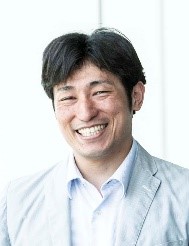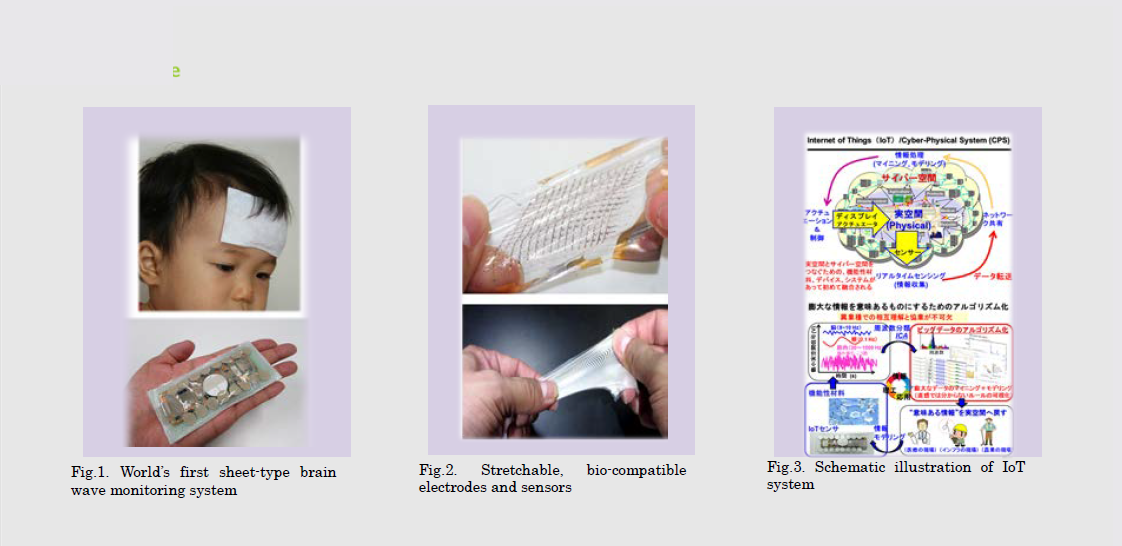
SANKEN
The University of Osaka
大阪大学
産業科学研究所

LAST UPDATE 2017/02/26
-
研究者氏名
Researcher Name関谷毅 Tsuyoshi SEKITANI
教授 Professor -
所属
Affiliation大阪大学 産業科学研究所
先進電子デバイス研究分野
SANKEN, The University of Osaka
Department of Advanced Electronic Devices -
研究キーワード
Research Keywordsフレキシブルエレクトロニクス
大面積センサー
有機半導体
Flexible electronics
Large-area sensors
Organic semiconductors
- 研究テーマ
Research Subject -
IoT 社会実現に向けたフレキシブルエレクトロニクスの研究開発
Flexible Electronics for IoT Applications
研究の背景 Background of the Research
柔らかい有機材料をエレクトロニクスの主要材料に用いることで、薄膜、軽量、シート型、曲げても、伸縮させても壊れない新しいエレクトロニクスの開発が進められている。柔らかいと様々な場所に展開することができる。大面積であっても、丸めて持ち運ぶことができるほか、持ち運ぶ際におとしても壊れにくい利点がある。特に、モノとモノがつながるインターネット時代(InternetofThings:IoT)を迎え、我々の住む実世界の情報収集には、多種多様でコスト効率の高い(大面積に展開しても低コストに抑えることができる)エレクトロニクスセンサーが求められている。ここではさまざまな場所に容易に展開できるフレキシブル、ストレッチャブルエレクトロニクスに期待が集まっている。
New electronic devices (electronics) that are lightweight, thin, and durable when bent or stretched are being developed using thin polymeric substrates. Flexible/stretchable electronics have various advantages; they can be applied to numerous locations; large-area electronics can be rolled up for transport, and they are break-resistant if dropped. In particular, we have entered the era of the Internet of Things (IoT), and various types of electronic sensor with a high cost efficiency (low cost for a large area) are demanded to collect information in the real world. Also in this sense, flexile, stretchable electronics fabricated by printing technology have been attracting attention.
研究の目標 Research Objective
我々のグループでは、有機機能性材料を用いた最新のフレキシブル、ストレッチャブルエレクトロニクスの研究開発を進めている。特に世界に先駆けて軽量で薄型の脳波センサなどマイクロボルトに及ぶ微小信号をワイヤレスで計測できるシート型生体電位センサーの開発に成功している。さらに生体電位センサーに限らず薄膜フレキシブルエレクトロニクスの特徴を活かした構造物ヘルスケア用センサーなどの研究開発を行っており、次世代のIoTシステムの実現を目指している。
The latest developments in flexible, stretchable electronics using organic functional materials such as organic semiconductors have been studied. Our research group has succeeded in developing ultrathin organic electronic systems, which are light, thin, flexible, and stretchable. The ultrathin flexible electronics and their future prospect such as the contribution of such devices to the next generation of tools in the fields of medicine, health, and welfare have been developed.
研究図Figures

論文発表 / Publications
http://www.sanken.osaka-u.ac.jp/labs/aed/japanese/achivement.html
研究者連絡先 / HP
- sekitani
 sanken.osaka-u.ac.jp
sanken.osaka-u.ac.jp - http://www.sanken.osaka-u.ac.jp/labs/aed/